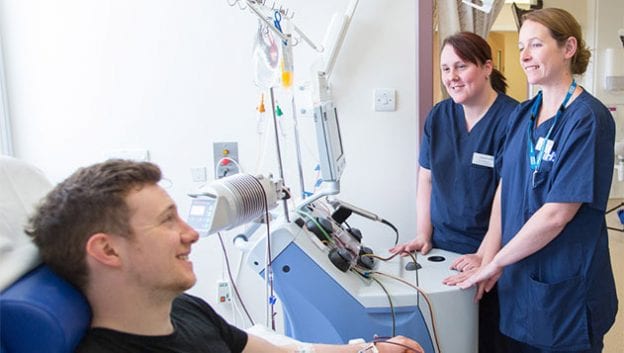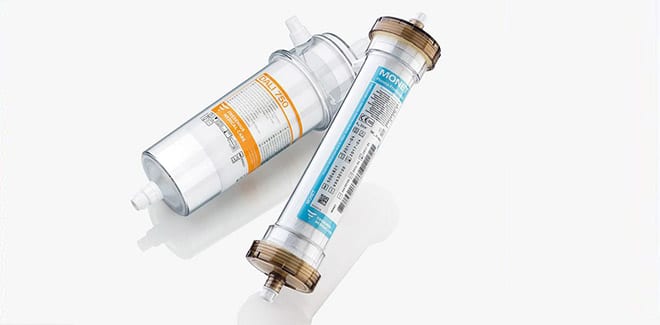
Difference between apheresis and dialysis
Biosalud Hospital Day administers the apheresis therapy many patients with autoimmune diseases. With apheresis therapy, it is now possible for a person suffering from an autoimmune disease to have an improved quality of life with just several therapy sessions.
The therapy of apheresis is a a medical procedure that involves removing a patient's blood and separating the blood into individual componentsi.e. platelets, white blood cells and red blood cells, so that a particular component can be removed. After the removal of that specific component, the remaining blood components are returned to the person's body. However, depending on the blood component being removed, different processes are involved in apheresis therapy, such as: plasmapheresis for the removal of plasma, leukapheresis for the removal of leukocytes, and plateletpheresis for the removal of platelets.
Double plasma filtration at Biosalud Hospital Day
At Biosalud Day Hospital we apply a pioneering technique, the double filtration of plasma. It consists of separating the plasma from the rest of the blood, and then applying two consecutive special filters, to specifically filter out the heavy metals, cholesterol, toxins of various types, such as bisphenol A), and the antibodies generated in autoimmune processesIn two alternating sessions, it produces a very high level of purification and the basis for the body's defence mechanisms to take action and the disease to change its course towards healing.
This procedure is also ideal for preventive purposes as an excellent anti-ageing treatment.

What is the difference between apheresis and dialysis?
Both apheresis and dialysis remove blood in a similar way, but serve different purposes.. In apheresis therapy, blood is separated into "blood components" where some of the components are removed from the patient's body. On the other hand, a dialysis machine, also known as a dialysis machine, is used to remove the blood components from the patient's body. artificial kidneyis used in a process known as haemodialysis. Haemodialysis is a way of purifying the blood of toxins, salt and fluid through a dialysis machine. Dialysis is also known as "artificial kidney" because it is a form of renal replacement therapy used for patients whose kidneys are no longer functional.. However, unlike dialysis, apheresis does not replace kidney functions.
What are some contraindications to apheresis?
Apheresis is not advisable for patients who have an active infection, unstable heart and/or lung problems, significantly low white blood cell or platelet counts, bleeding tendency or significantly low blood pressure.. The general health of the patients and the severity of the disease are taken into account.
Diseases to be treated with apheresis
Apheresis therapy may be beneficial for the treatment of autoimmune diseases, such as myasthenia gravis and hyperviscosity syndrome. Apheresis therapy can be used to treat various autoimmune diseases, and can help improve the patient's quality of life. In addition, apheresis therapy can be used to treat a number of autoimmune diseases, when apheresis is used in a therapeutic way, the frequency of treatments, the volume of blood or components to be removed and the solution used are individualised to meet the needs of the patient.

